Radiology
Cardiology
Oncology
Orthopedics
On-Premise
Cloud-Based
Web-Based
Hospitals
Diagnostic Centers
Research Institutes
Pharmaceutical Companies
Ultrasound Imaging
Computed Tomography
Magnetic Resonance Imaging
X-Ray Imaging
North America
Europe
South America
Asia Pacific
Middle East and Africa
North America Outlook (USD Billion, 2019-2035)
North America Medical Imaging Software Market by Application Type
Radiology
Cardiology
Oncology
Orthopedics
North America Medical Imaging Software Market by Deployment Type
On-Premise
Cloud-Based
Web-Based
North America Medical Imaging Software Market by End User Type
Hospitals
Diagnostic Centers
Research Institutes
Pharmaceutical Companies
North America Medical Imaging Software Market by Imaging Modality Type
Ultrasound Imaging
Computed Tomography
Magnetic Resonance Imaging
X-Ray Imaging
North America Medical Imaging Software Market by Regional Type
US
Canada
US Outlook (USD Billion, 2019-2035)
US Medical Imaging Software Market by Application Type
Radiology
Cardiology
Oncology
Orthopedics
US Medical Imaging Software Market by Deployment Type
On-Premise
Cloud-Based
Web-Based
US Medical Imaging Software Market by End User Type
Hospitals
Diagnostic Centers
Research Institutes
Pharmaceutical Companies
US Medical Imaging Software Market by Imaging Modality Type
Ultrasound Imaging
Computed Tomography
Magnetic Resonance Imaging
X-Ray Imaging
CANADA Outlook (USD Billion, 2019-2035)
CANADA Medical Imaging Software Market by Application Type
Radiology
Cardiology
Oncology
Orthopedics
CANADA Medical Imaging Software Market by Deployment Type
On-Premise
Cloud-Based
Web-Based
CANADA Medical Imaging Software Market by End User Type
Hospitals
Diagnostic Centers
Research Institutes
Pharmaceutical Companies
CANADA Medical Imaging Software Market by Imaging Modality Type
Ultrasound Imaging
Computed Tomography
Magnetic Resonance Imaging
X-Ray Imaging
Europe Outlook (USD Billion, 2019-2035)
Europe Medical Imaging Software Market by Application Type
Radiology
Cardiology
Oncology
Orthopedics
Europe Medical Imaging Software Market by Deployment Type
On-Premise
Cloud-Based
Web-Based
Europe Medical Imaging Software Market by End User Type
Hospitals
Diagnostic Centers
Research Institutes
Pharmaceutical Companies
Europe Medical Imaging Software Market by Imaging Modality Type
Ultrasound Imaging
Computed Tomography
Magnetic Resonance Imaging
X-Ray Imaging
Europe Medical Imaging Software Market by Regional Type
Germany
UK
France
Russia
Italy
Spain
Rest of Europe
GERMANY Outlook (USD Billion, 2019-2035)
GERMANY Medical Imaging Software Market by Application Type
Radiology
Cardiology
Oncology
Orthopedics
GERMANY Medical Imaging Software Market by Deployment Type
On-Premise
Cloud-Based
Web-Based
GERMANY Medical Imaging Software Market by End User Type
Hospitals
Diagnostic Centers
Research Institutes
Pharmaceutical Companies
GERMANY Medical Imaging Software Market by Imaging Modality Type
Ultrasound Imaging
Computed Tomography
Magnetic Resonance Imaging
X-Ray Imaging
UK Outlook (USD Billion, 2019-2035)
UK Medical Imaging Software Market by Application Type
Radiology
Cardiology
Oncology
Orthopedics
UK Medical Imaging Software Market by Deployment Type
On-Premise
Cloud-Based
Web-Based
UK Medical Imaging Software Market by End User Type
Hospitals
Diagnostic Centers
Research Institutes
Pharmaceutical Companies
UK Medical Imaging Software Market by Imaging Modality Type
Ultrasound Imaging
Computed Tomography
Magnetic Resonance Imaging
X-Ray Imaging
FRANCE Outlook (USD Billion, 2019-2035)
FRANCE Medical Imaging Software Market by Application Type
Radiology
Cardiology
Oncology
Orthopedics
FRANCE Medical Imaging Software Market by Deployment Type
On-Premise
Cloud-Based
Web-Based
FRANCE Medical Imaging Software Market by End User Type
Hospitals
Diagnostic Centers
Research Institutes
Pharmaceutical Companies
FRANCE Medical Imaging Software Market by Imaging Modality Type
Ultrasound Imaging
Computed Tomography
Magnetic Resonance Imaging
X-Ray Imaging
RUSSIA Outlook (USD Billion, 2019-2035)
RUSSIA Medical Imaging Software Market by Application Type
Radiology
Cardiology
Oncology
Orthopedics
RUSSIA Medical Imaging Software Market by Deployment Type
On-Premise
Cloud-Based
Web-Based
RUSSIA Medical Imaging Software Market by End User Type
Hospitals
Diagnostic Centers
Research Institutes
Pharmaceutical Companies
RUSSIA Medical Imaging Software Market by Imaging Modality Type
Ultrasound Imaging
Computed Tomography
Magnetic Resonance Imaging
X-Ray Imaging
ITALY Outlook (USD Billion, 2019-2035)
ITALY Medical Imaging Software Market by Application Type
Radiology
Cardiology
Oncology
Orthopedics
ITALY Medical Imaging Software Market by Deployment Type
On-Premise
Cloud-Based
Web-Based
ITALY Medical Imaging Software Market by End User Type
Hospitals
Diagnostic Centers
Research Institutes
Pharmaceutical Companies
ITALY Medical Imaging Software Market by Imaging Modality Type
Ultrasound Imaging
Computed Tomography
Magnetic Resonance Imaging
X-Ray Imaging
SPAIN Outlook (USD Billion, 2019-2035)
SPAIN Medical Imaging Software Market by Application Type
Radiology
Cardiology
Oncology
Orthopedics
SPAIN Medical Imaging Software Market by Deployment Type
On-Premise
Cloud-Based
Web-Based
SPAIN Medical Imaging Software Market by End User Type
Hospitals
Diagnostic Centers
Research Institutes
Pharmaceutical Companies
SPAIN Medical Imaging Software Market by Imaging Modality Type
Ultrasound Imaging
Computed Tomography
Magnetic Resonance Imaging
X-Ray Imaging
REST OF EUROPE Outlook (USD Billion, 2019-2035)
REST OF EUROPE Medical Imaging Software Market by Application Type
Radiology
Cardiology
Oncology
Orthopedics
REST OF EUROPE Medical Imaging Software Market by Deployment Type
On-Premise
Cloud-Based
Web-Based
REST OF EUROPE Medical Imaging Software Market by End User Type
Hospitals
Diagnostic Centers
Research Institutes
Pharmaceutical Companies
REST OF EUROPE Medical Imaging Software Market by Imaging Modality Type
Ultrasound Imaging
Computed Tomography
Magnetic Resonance Imaging
X-Ray Imaging
APAC Outlook (USD Billion, 2019-2035)
APAC Medical Imaging Software Market by Application Type
Radiology
Cardiology
Oncology
Orthopedics
APAC Medical Imaging Software Market by Deployment Type
On-Premise
Cloud-Based
Web-Based
APAC Medical Imaging Software Market by End User Type
Hospitals
Diagnostic Centers
Research Institutes
Pharmaceutical Companies
APAC Medical Imaging Software Market by Imaging Modality Type
Ultrasound Imaging
Computed Tomography
Magnetic Resonance Imaging
X-Ray Imaging
APAC Medical Imaging Software Market by Regional Type
China
India
Japan
South Korea
Malaysia
Thailand
Indonesia
Rest of APAC
CHINA Outlook (USD Billion, 2019-2035)
CHINA Medical Imaging Software Market by Application Type
Radiology
Cardiology
Oncology
Orthopedics
CHINA Medical Imaging Software Market by Deployment Type
On-Premise
Cloud-Based
Web-Based
CHINA Medical Imaging Software Market by End User Type
Hospitals
Diagnostic Centers
Research Institutes
Pharmaceutical Companies
CHINA Medical Imaging Software Market by Imaging Modality Type
Ultrasound Imaging
Computed Tomography
Magnetic Resonance Imaging
X-Ray Imaging
INDIA Outlook (USD Billion, 2019-2035)
INDIA Medical Imaging Software Market by Application Type
Radiology
Cardiology
Oncology
Orthopedics
INDIA Medical Imaging Software Market by Deployment Type
On-Premise
Cloud-Based
Web-Based
INDIA Medical Imaging Software Market by End User Type
Hospitals
Diagnostic Centers
Research Institutes
Pharmaceutical Companies
INDIA Medical Imaging Software Market by Imaging Modality Type
Ultrasound Imaging
Computed Tomography
Magnetic Resonance Imaging
X-Ray Imaging
JAPAN Outlook (USD Billion, 2019-2035)
JAPAN Medical Imaging Software Market by Application Type
Radiology
Cardiology
Oncology
Orthopedics
JAPAN Medical Imaging Software Market by Deployment Type
On-Premise
Cloud-Based
Web-Based
JAPAN Medical Imaging Software Market by End User Type
Hospitals
Diagnostic Centers
Research Institutes
Pharmaceutical Companies
JAPAN Medical Imaging Software Market by Imaging Modality Type
Ultrasound Imaging
Computed Tomography
Magnetic Resonance Imaging
X-Ray Imaging
SOUTH KOREA Outlook (USD Billion, 2019-2035)
SOUTH KOREA Medical Imaging Software Market by Application Type
Radiology
Cardiology
Oncology
Orthopedics
SOUTH KOREA Medical Imaging Software Market by Deployment Type
On-Premise
Cloud-Based
Web-Based
SOUTH KOREA Medical Imaging Software Market by End User Type
Hospitals
Diagnostic Centers
Research Institutes
Pharmaceutical Companies
SOUTH KOREA Medical Imaging Software Market by Imaging Modality Type
Ultrasound Imaging
Computed Tomography
Magnetic Resonance Imaging
X-Ray Imaging
MALAYSIA Outlook (USD Billion, 2019-2035)
MALAYSIA Medical Imaging Software Market by Application Type
Radiology
Cardiology
Oncology
Orthopedics
MALAYSIA Medical Imaging Software Market by Deployment Type
On-Premise
Cloud-Based
Web-Based
MALAYSIA Medical Imaging Software Market by End User Type
Hospitals
Diagnostic Centers
Research Institutes
Pharmaceutical Companies
MALAYSIA Medical Imaging Software Market by Imaging Modality Type
Ultrasound Imaging
Computed Tomography
Magnetic Resonance Imaging
X-Ray Imaging
THAILAND Outlook (USD Billion, 2019-2035)
THAILAND Medical Imaging Software Market by Application Type
Radiology
Cardiology
Oncology
Orthopedics
THAILAND Medical Imaging Software Market by Deployment Type
On-Premise
Cloud-Based
Web-Based
THAILAND Medical Imaging Software Market by End User Type
Hospitals
Diagnostic Centers
Research Institutes
Pharmaceutical Companies
THAILAND Medical Imaging Software Market by Imaging Modality Type
Ultrasound Imaging
Computed Tomography
Magnetic Resonance Imaging
X-Ray Imaging
INDONESIA Outlook (USD Billion, 2019-2035)
INDONESIA Medical Imaging Software Market by Application Type
Radiology
Cardiology
Oncology
Orthopedics
INDONESIA Medical Imaging Software Market by Deployment Type
On-Premise
Cloud-Based
Web-Based
INDONESIA Medical Imaging Software Market by End User Type
Hospitals
Diagnostic Centers
Research Institutes
Pharmaceutical Companies
INDONESIA Medical Imaging Software Market by Imaging Modality Type
Ultrasound Imaging
Computed Tomography
Magnetic Resonance Imaging
X-Ray Imaging
REST OF APAC Outlook (USD Billion, 2019-2035)
REST OF APAC Medical Imaging Software Market by Application Type
Radiology
Cardiology
Oncology
Orthopedics
REST OF APAC Medical Imaging Software Market by Deployment Type
On-Premise
Cloud-Based
Web-Based
REST OF APAC Medical Imaging Software Market by End User Type
Hospitals
Diagnostic Centers
Research Institutes
Pharmaceutical Companies
REST OF APAC Medical Imaging Software Market by Imaging Modality Type
Ultrasound Imaging
Computed Tomography
Magnetic Resonance Imaging
X-Ray Imaging
South America Outlook (USD Billion, 2019-2035)
South America Medical Imaging Software Market by Application Type
Radiology
Cardiology
Oncology
Orthopedics
South America Medical Imaging Software Market by Deployment Type
On-Premise
Cloud-Based
Web-Based
South America Medical Imaging Software Market by End User Type
Hospitals
Diagnostic Centers
Research Institutes
Pharmaceutical Companies
South America Medical Imaging Software Market by Imaging Modality Type
Ultrasound Imaging
Computed Tomography
Magnetic Resonance Imaging
X-Ray Imaging
South America Medical Imaging Software Market by Regional Type
Brazil
Mexico
Argentina
Rest of South America
BRAZIL Outlook (USD Billion, 2019-2035)
BRAZIL Medical Imaging Software Market by Application Type
Radiology
Cardiology
Oncology
Orthopedics
BRAZIL Medical Imaging Software Market by Deployment Type
On-Premise
Cloud-Based
Web-Based
BRAZIL Medical Imaging Software Market by End User Type
Hospitals
Diagnostic Centers
Research Institutes
Pharmaceutical Companies
BRAZIL Medical Imaging Software Market by Imaging Modality Type
Ultrasound Imaging
Computed Tomography
Magnetic Resonance Imaging
X-Ray Imaging
MEXICO Outlook (USD Billion, 2019-2035)
MEXICO Medical Imaging Software Market by Application Type
Radiology
Cardiology
Oncology
Orthopedics
MEXICO Medical Imaging Software Market by Deployment Type
On-Premise
Cloud-Based
Web-Based
MEXICO Medical Imaging Software Market by End User Type
Hospitals
Diagnostic Centers
Research Institutes
Pharmaceutical Companies
MEXICO Medical Imaging Software Market by Imaging Modality Type
Ultrasound Imaging
Computed Tomography
Magnetic Resonance Imaging
X-Ray Imaging
ARGENTINA Outlook (USD Billion, 2019-2035)
ARGENTINA Medical Imaging Software Market by Application Type
Radiology
Cardiology
Oncology
Orthopedics
ARGENTINA Medical Imaging Software Market by Deployment Type
On-Premise
Cloud-Based
Web-Based
ARGENTINA Medical Imaging Software Market by End User Type
Hospitals
Diagnostic Centers
Research Institutes
Pharmaceutical Companies
ARGENTINA Medical Imaging Software Market by Imaging Modality Type
Ultrasound Imaging
Computed Tomography
Magnetic Resonance Imaging
X-Ray Imaging
REST OF SOUTH AMERICA Outlook (USD Billion, 2019-2035)
REST OF SOUTH AMERICA Medical Imaging Software Market by Application Type
Radiology
Cardiology
Oncology
Orthopedics
REST OF SOUTH AMERICA Medical Imaging Software Market by Deployment Type
On-Premise
Cloud-Based
Web-Based
REST OF SOUTH AMERICA Medical Imaging Software Market by End User Type
Hospitals
Diagnostic Centers
Research Institutes
Pharmaceutical Companies
REST OF SOUTH AMERICA Medical Imaging Software Market by Imaging Modality Type
Ultrasound Imaging
Computed Tomography
Magnetic Resonance Imaging
X-Ray Imaging
MEA Outlook (USD Billion, 2019-2035)
MEA Medical Imaging Software Market by Application Type
Radiology
Cardiology
Oncology
Orthopedics
MEA Medical Imaging Software Market by Deployment Type
On-Premise
Cloud-Based
Web-Based
MEA Medical Imaging Software Market by End User Type
Hospitals
Diagnostic Centers
Research Institutes
Pharmaceutical Companies
MEA Medical Imaging Software Market by Imaging Modality Type
Ultrasound Imaging
Computed Tomography
Magnetic Resonance Imaging
X-Ray Imaging
MEA Medical Imaging Software Market by Regional Type
GCC Countries
South Africa
Rest of MEA
GCC COUNTRIES Outlook (USD Billion, 2019-2035)
GCC COUNTRIES Medical Imaging Software Market by Application Type
Radiology
Cardiology
Oncology
Orthopedics
GCC COUNTRIES Medical Imaging Software Market by Deployment Type
On-Premise
Cloud-Based
Web-Based
GCC COUNTRIES Medical Imaging Software Market by End User Type
Hospitals
Diagnostic Centers
Research Institutes
Pharmaceutical Companies
GCC COUNTRIES Medical Imaging Software Market by Imaging Modality Type
Ultrasound Imaging
Computed Tomography
Magnetic Resonance Imaging
X-Ray Imaging
SOUTH AFRICA Outlook (USD Billion, 2019-2035)
SOUTH AFRICA Medical Imaging Software Market by Application Type
Radiology
Cardiology
Oncology
Orthopedics
SOUTH AFRICA Medical Imaging Software Market by Deployment Type
On-Premise
Cloud-Based
Web-Based
SOUTH AFRICA Medical Imaging Software Market by End User Type
Hospitals
Diagnostic Centers
Research Institutes
Pharmaceutical Companies
SOUTH AFRICA Medical Imaging Software Market by Imaging Modality Type
Ultrasound Imaging
Computed Tomography
Magnetic Resonance Imaging
X-Ray Imaging
REST OF MEA Outlook (USD Billion, 2019-2035)
REST OF MEA Medical Imaging Software Market by Application Type
Radiology
Cardiology
Oncology
Orthopedics
REST OF MEA Medical Imaging Software Market by Deployment Type
On-Premise
Cloud-Based
Web-Based
REST OF MEA Medical Imaging Software Market by End User Type
Hospitals
Diagnostic Centers
Research Institutes
Pharmaceutical Companies
REST OF MEA Medical Imaging Software Market by Imaging Modality Type
Ultrasound Imaging
Computed Tomography
Magnetic Resonance Imaging
X-Ray Imaging


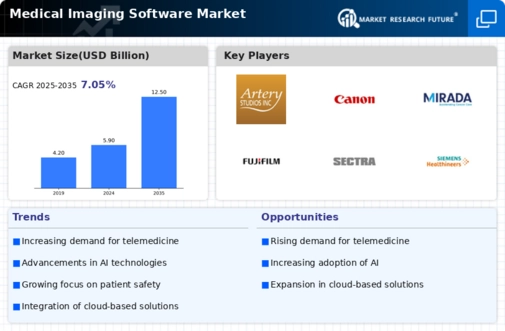
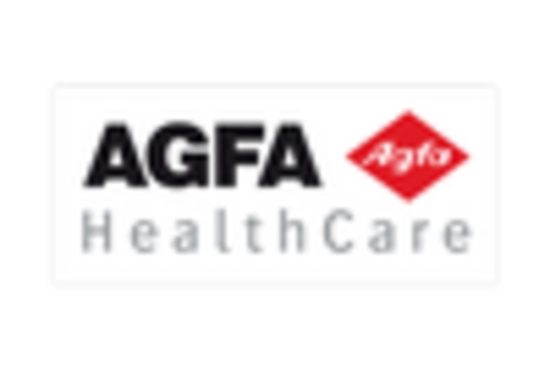
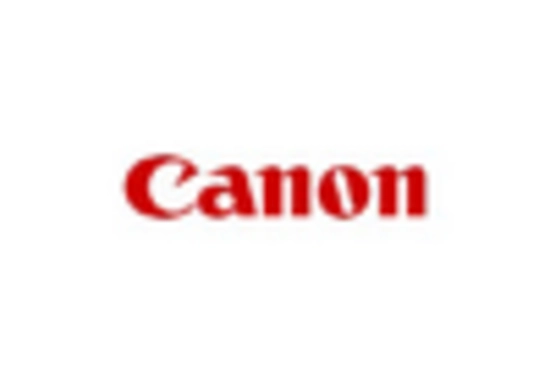
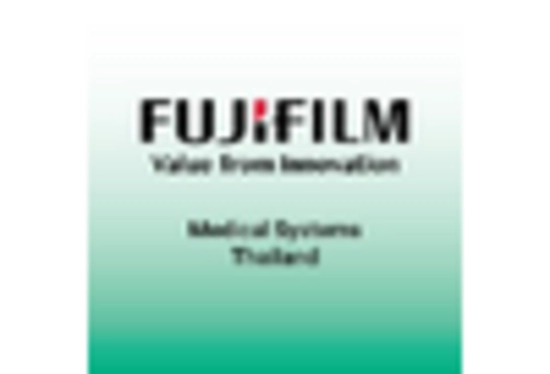

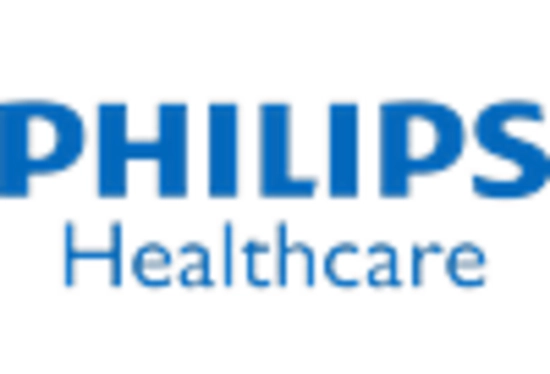










Leave a Comment